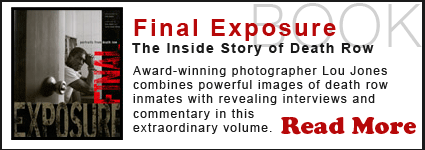How I introduced POLAROID to Japan
Saturday, February 28, 2015
How I introduced POLAROID to Japan In the 1980s and early 1990s, I traveled to Japan every year “piggybacking” assignments for a diverse assortment of commercial and editorial entities. By sharing expenses amongst more than one client I could make it worthwhile for them to send me such a huge distance and for a lengthy period of time.
It was illegal for me to “import” my Balcar strobes into Japan because their regulations for electronic safety were more stringent than UL or OSHA. So I decided to try to rent approved strobe equipment in-country.
Before computers and faxes, communicating in a foreign language was difficult to say the least. Phones were almost impossible so most of my correspondence with Japanese subjects and companies was by mail...slow and painful. It often took weeks for my letters to shinny up the hierarchy, get approval and transmit the terms and conditions back to me.
 I negotiated with a photography rental company in Tokyo for all the equipment I would need while I was there. My counterpart did not speak much English and I certainly had no command of Japanese. Somehow we forged a relationship. (The Japanese are very efficient and accommodating.)
I negotiated with a photography rental company in Tokyo for all the equipment I would need while I was there. My counterpart did not speak much English and I certainly had no command of Japanese. Somehow we forged a relationship. (The Japanese are very efficient and accommodating.)I lugged the Balcar monoblock lights all over Japan -- in taxis, subways, Shinkansen (bullet trains) and limousines. Up and down stairs, in and out of factories, to and fro executives and CEOs. During my first three week visit I kept booking more proprietary situations to photograph in the inner sanctums of Japanese technology. It was life changing even though the stress almost killed me. At the end I returned to the shop to pay for the extended usage of the rented lights. I thought it would cost me a fortune but they were so happy to work with a “gaijin” (bad slang loosely translated meaning foreigner or alien) that they gave me a discount.
On my last day in Japan I was packing up. The agent spotted something unusual in my kit he had never seen before. “What’s that? he asked in broken English. It was my well-worn Polaroid back that fit my Nikon 35mm cameras. (Before digital cameras Road Warriors tested all their set-ups with special instant film that helped them previsualize what they then committed to film.)
Surprised, I showed him how to use the crude peel-apart film that was becoming state-of-the-art for American commercial photographers. I had become so used to it in my annual report and magazine work I never imagined that everyone savvy in the business was not familiar with the amazing technique.
“Oh yes, this is essential in the States. As a matter of fact the company that manufactures them is local to me and I know the guys. Would you like me to put you in touch?” Using the antiquated but reliable mail system I followed through.
I returned approximately the same time the following year to repeat my annual mission. This time I carried an assistant with me but still had to rent all my lighting stuff. We stayed even longer and criss-crossed the island nation several times. Learning to negotiate in such a complex environment taught me skills that literally changed my business. The education I received from maneuvering through the minefields of corporate Japan was invaluable. I learned how to dress, how to talk, how to eat, how to get my way and have model releases signed in a foreign language and culture.
The first year I entered Japan the exchange rate was very advantageous to the American dollar but this time the governmental infighting made my buying power far less effective. So I fully expected an even bigger bill for the rental fee. When I returned to the shop I asked for the invoice. No charge. “What?” “Why?”
I had completely forgotten my introduction across the Pacific. My friend had made a connection with the maker of Polaroid backs in the USA. He had become the exclusive distributer of them in the Pacific Rim. And I never paid a dime for lighting equipment in all the subsequent years I traveled to Japan.




















0 comments:
Post a Comment